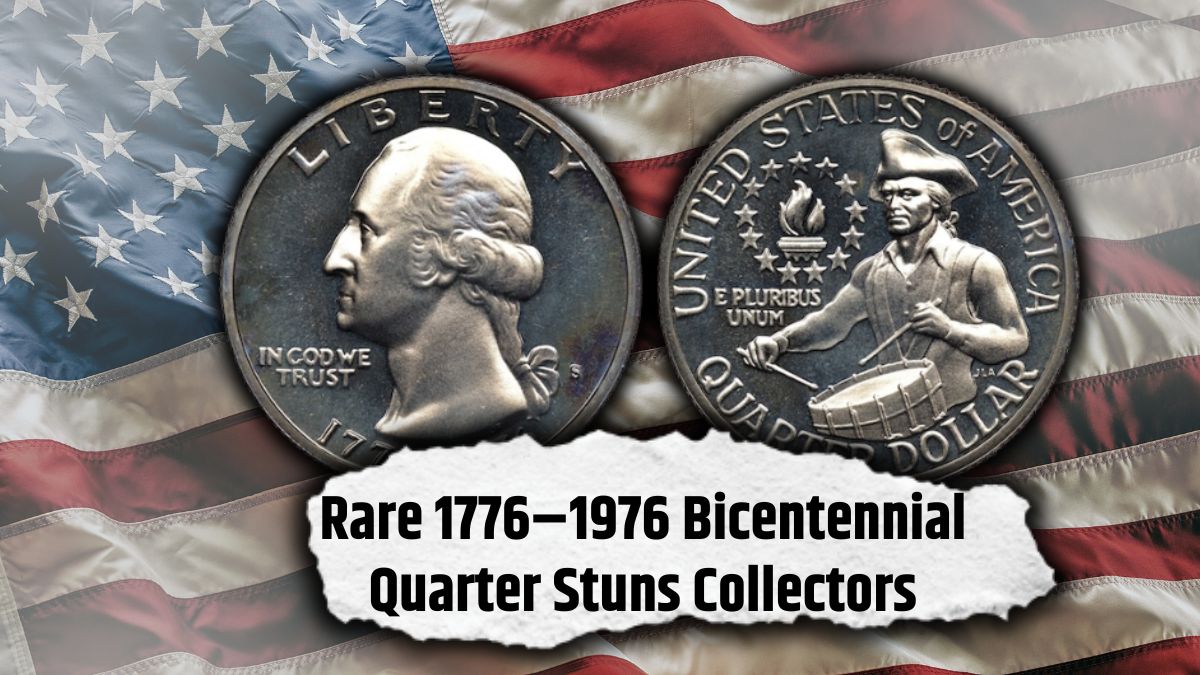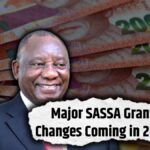Most people don’t think twice about the quarters in their pocket, but a select few are suddenly getting a lot of attention—especially one particular type: the 1776–1976 Bicentennial Quarter. Released to mark 200 years of American independence, this commemorative coin now has collectors scrambling to find rare versions that are selling for thousands of dollars.
While the majority of these coins still trade for their face value of 25 cents, some rare variants are now valued at over $5,000, shocking both amateur collectors and seasoned numismatists.
What Is the 1776–1976 Bicentennial Quarter?
The Bicentennial Quarter is a special issue of the U.S. quarter dollar, minted between 1975 and 1976 to celebrate America’s bicentennial. These coins feature the dual date “1776–1976” on the obverse instead of a single year and are instantly recognizable due to their unique reverse design—a drummer boy replacing the traditional eagle.
Though widely circulated, only a few of these quarters possess the traits that make them extremely valuable to collectors.
Why Are Some Bicentennial Quarters Worth So Much?
Most Bicentennial Quarters are still worth just 25 cents, but some rare pieces can be worth hundreds or even thousands of dollars. Their elevated value depends on several key factors:
- Minting errors like double strikes or off-center images
- Silver composition, particularly 40% silver collector coins
- Proof coin finishes made for collectors
- Uncirculated or pristine condition
- Low mintage versions from specific mints
These high-value characteristics are uncommon, but when found, they significantly increase a coin’s worth.
Key Facts About the Bicentennial Quarter
| Feature | Details |
|---|---|
| Coin Name | 1776–1976 Bicentennial Quarter |
| Reverse Design | Drummer boy (patriotic design) |
| Standard Composition | Copper-Nickel Clad |
| Rare Composition | 40% Silver (collector sets) |
| High-Value Triggers | Errors, silver content, proof finish |
| Value Range | $0.25 to over $5,000 |
| Mint Marks to Watch | “S” (San Francisco), “D” (Denver), “No Mint” (Philadelphia) |
| Still in Circulation | Yes, found in pocket change today |
How to Tell If Your Bicentennial Quarter Is Valuable
You don’t need to be a coin expert to check the value of your Bicentennial Quarter. Here are simple steps to evaluate your coin:
Look for a Mint Mark
Inspect the small letter beneath the date. A “D” means Denver mint, “S” for San Francisco, and no letter usually means Philadelphia. Coins with an “S” are often part of collector sets and may be silver.
Check the Edge
If the edge appears pure silver without a copper stripe, your coin might be made of 40% silver—a strong sign of added value.
Scan for Errors
Watch for unusual features like double strikes, misaligned prints, or missing details. These minting errors make coins especially collectible.
Use a Scale
Silver quarters generally weigh about 5.75 grams, slightly more than the standard 5.67 grams. Weighing your coin can help confirm its metal content.
Examine the Condition
Coins that are shiny, sharp, and uncirculated hold more value than those with heavy wear or damage.
Why Collectors Are Shocked by These Quarters
The surprise in the numismatic world comes from the fact that a coin commonly used in daily transactions could be worth thousands. Recent auctions have seen rare Bicentennial Quarters sell for over $5,000, sparking renewed interest in a coin that many overlooked.
Most people associate valuable coins with much older mintage dates, but the 1970s Bicentennial Quarter is proving to be an exception—especially when rare characteristics are present.
Now, even casual hobbyists are inspecting their change jars and coin collections, hoping they might uncover an overlooked treasure.
What To Do If You Discover a Rare Quarter
If you believe you have a valuable Bicentennial Quarter, follow these tips:
- Do not spend it — Set it aside immediately.
- Avoid cleaning — Cleaning reduces collectible value.
- Store safely — Use a coin sleeve or airtight holder.
- Get it appraised — Visit a coin shop or use a grading service like PCGS or NGC.
- Research values — Check online coin auction platforms for recent sales of similar coins.
Even if your coin doesn’t reach the $5,000 mark, it could still be worth significantly more than face value.
FAQs About the 1776–1976 Bicentennial Quarter
Q1. Are all Bicentennial Quarters valuable?
No. Most are still only worth 25 cents. Only special versions—such as those with errors, proof finishes, or silver content—carry higher value.
Q2. How can I tell if my Bicentennial Quarter is made of silver?
Check the coin’s edge. If there’s no visible copper stripe and it looks silver all around, it may be a 40% silver version from a collector set.
Q3. What is a proof coin?
A proof coin is specially minted with a high-shine finish and detailed strike. These coins were never intended for general circulation and are especially sought after.
Q4. Where can I sell a valuable quarter?
Options include reputable coin dealers, online auctions, or coin shows. Always verify its value through appraisal before listing it.
Q5. Why are minting error coins valuable?
Error coins result from mistakes during the production process. Because they are rare and unusual, they attract strong interest from collectors.







